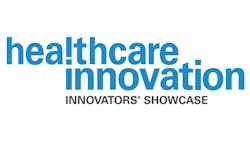Core Clinical Transformation Work Moves Ahead at Hartford Hospital
Every year in the United States, more than 350 million peripheral intravenous catheters (PIVCs) are sold, with failure rates averaging 53 percent, or one out of every two catheters failing prior to the completion of therapy. Since routine replacement of PIVCs has proven ineffective at decreasing complication rates, clinician leaders in hospitals across the world have been shifting to routinely removing PIVCs only when clinically indicated (when symptoms appear, or the catheter is no longer needed).
At Hartford Hospital, an 867-bed level one trauma center in Hartford, Conn., the leaders of the intravenous (IV) team made the strategic decision to change their policy of replacing PIVCs every 72 to 96 hours, with a new policy of replacing catheters only when clinically indicated. In the process of shifting that policy, they performed a study that compared a Vascular Access Specialty Team (VAST) inserting PIVCs using a best practice bundle vs. the generalist model, with the end goal of showing better patient outcomes, reduction in harmful IV-related complications, and overall cost savings. The aim of the study was to have 1 PIVC per patient stay. Being a Lean hospital, the IV Team used Lean methodology to create a best-practice bundle they would implement for this study. The bundle, known today as the “PIV5Rights,” was created to address the five known causes of PIVC failure—infiltrations, phlebitis, infection, occlusion, and inadvertent removal. The “five rights” in this case are “right proficiency,” “right insertion,” “right vein and catheter,” “right supplies and technology,” and “right review and assessment.”
Lee Steere, R.N., is unit leader for IT therapy services at Hartford Hospital, and has been leading the initiative. He says that one key element in the success of the initiative, which came into being sometime after Hartford Hospital’s executive management committed to Lean management strategies—Steere received his Lean training in 2013—has been that high level of commitment to analyze processes and map out change in clinical and operational areas.
Another key element in the success of this initiative, Steere says, has come from his and his team’s insistence on adhering to the DMAIC concept, which comes out of Six Sigma work. DMAIC stands for “define, measure, analyze, improve, and control,” is a core tool used to drive Six Sigma projects, and is also used in Lean management. “We wanted to make sure that using DMAIC kept us on track, and forced us, through each step of our process, to dig deep and stay focused on completing that part before moving onto the next phase,” he says. “The ‘measure’ took a long time, because it required analyzing a lot of data, and looking at length-of-stay reports, patient satisfaction, cost and consumption of IV supplies, and other data elements; then we knew we had the right data. In addition,” he says, “we looked at over 100 articles and pieces of literature around this.”
Then, Steere says, “We came up with our best practice bundle, which was the ‘improvement’ part. And we made sure we were doing the exact same thing. That’s how we used Lean; we created standard work, including making sure that everyone was dressing and taping in the same way.” That bundle encompassed the following key elements: the use of ultrasound-guided insertion, performed by a trained R.N. (“right proficiency”); the use of an ultrasound or vein viewer to place PIVCs in order to strive for 100 percent first-stick success (“right insertion”); forearm placement and right vein to catheter ratio of both diameter and length (“right vein and catheter”); a procedural kit for compliance (“right supplies and technology”); and assessment performed daily by a clinical team, including assessment of dressing integrity and flushing to assure PIVC patency (“right review and assessment”).
The results have been noteworthy: as Steere reports, a financial analysis of the program was conducted using the results of this study and presented to the hospital’s chief nursing officer (CNO), with the goal of receiving approval to implement a VAST placing all PIVCs on all inpatient units. Among the achievements: a reduction of $3,376 per bed per year, with a projected $2.9 million in annual savings. With these results, the CNO of Hartford Hospital granted approval for the IV Team to centralize all PIVC insertions on the inpatient units using the IV Team and this bundled approach.
Meanwhile, Steere notes, “The hard costs in this case are supply costs, but the soft costs include elements like nurses’ time. And in this day and age, we need to constantly get better, especially as reimbursement is changing. But without doing your homework before you start something, and without collecting the data, you can never truly justify what you’re trying to achieve.” Steere says he believes that this initiative speaks to the core clinical transformation efforts that are needed to reform U.S. healthcare from within, even as the clinical transformation of healthcare remains more complex and challenging than internal transformations taking place in other industries.



